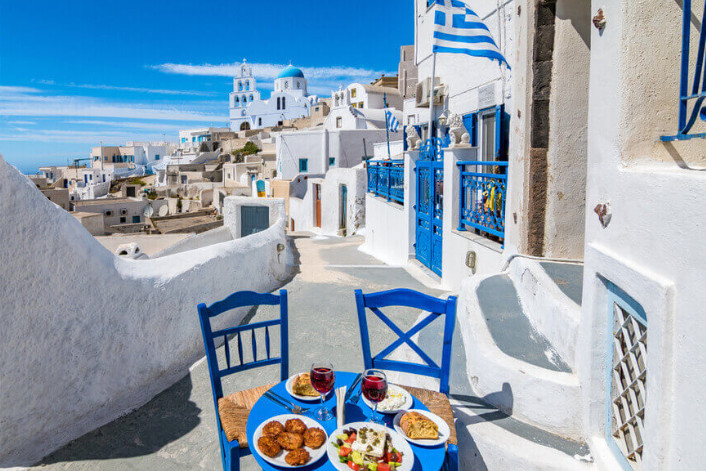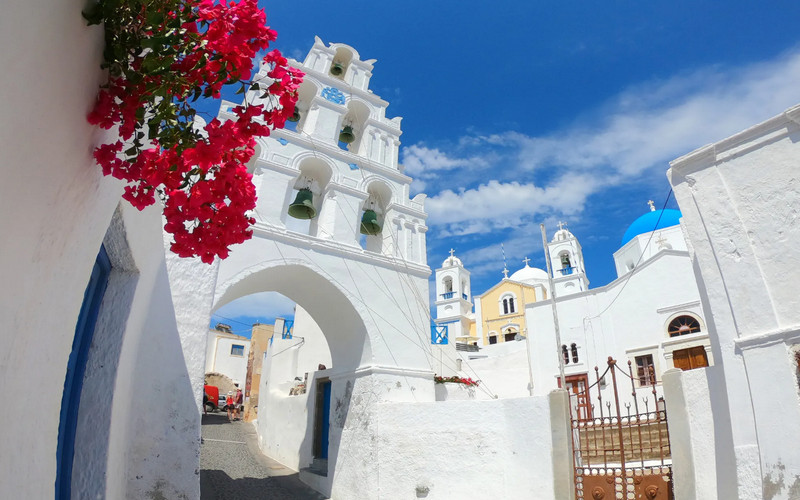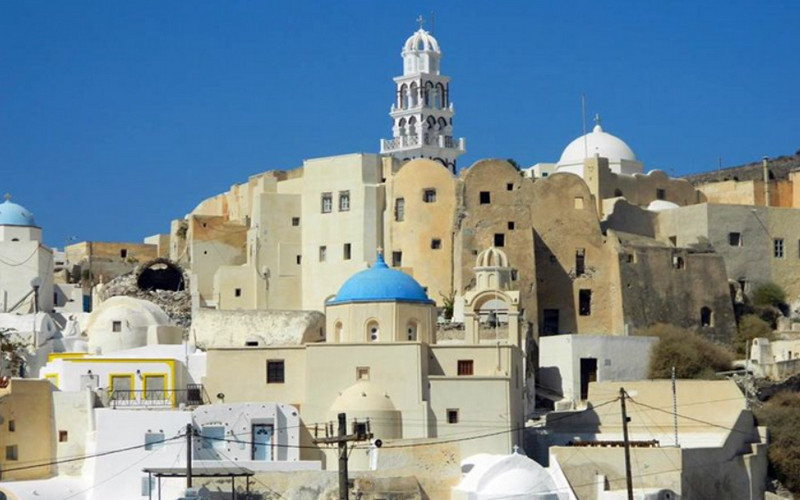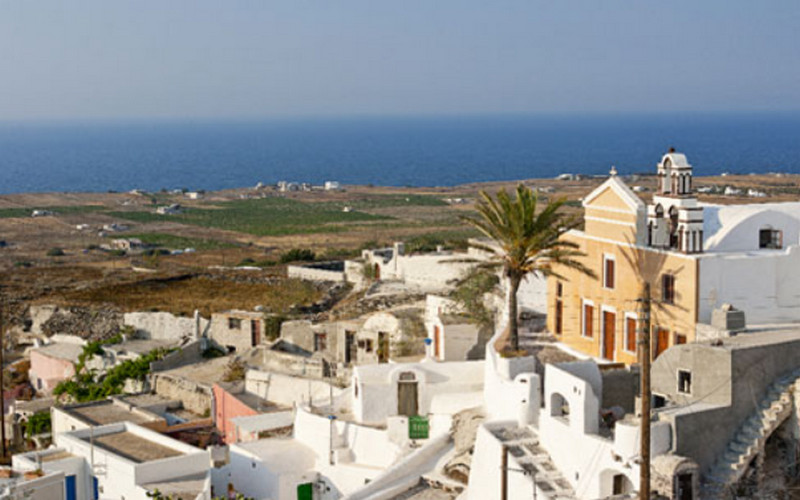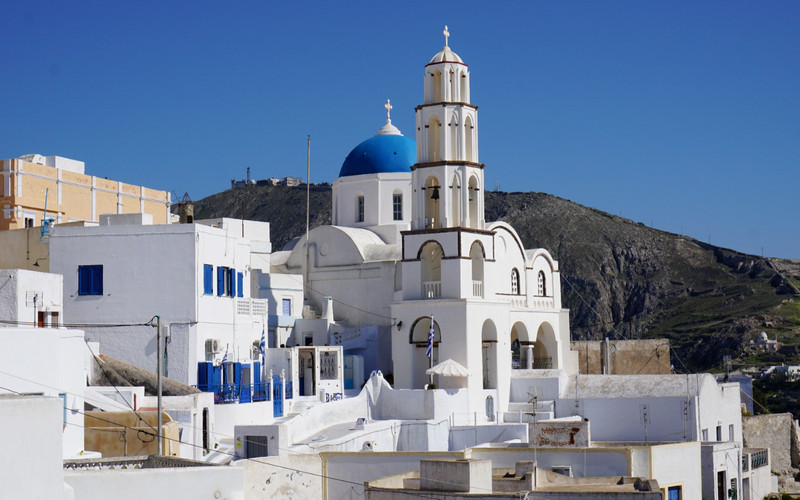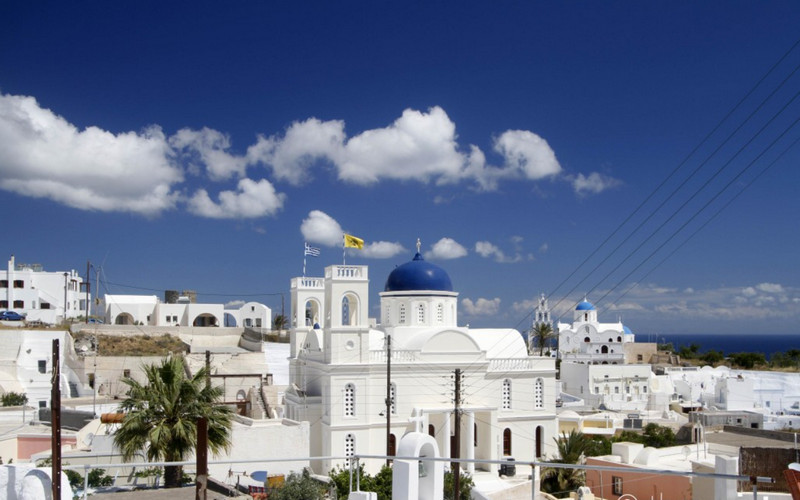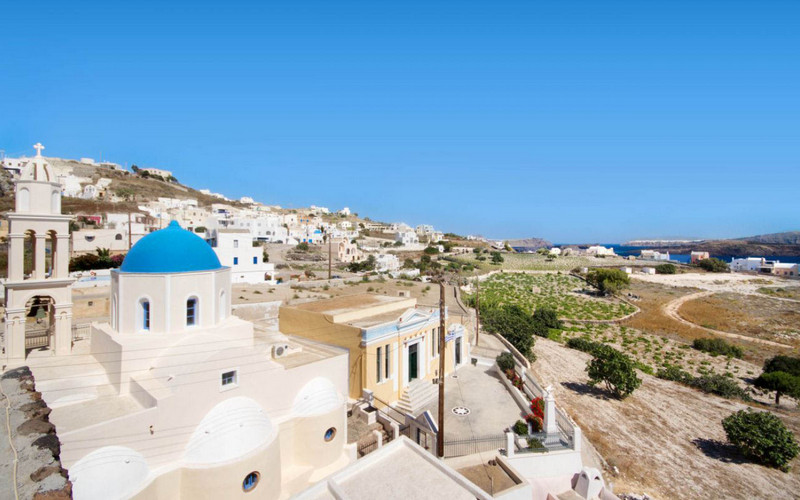Santorini may be world-renowned for its iconic sunsets in Oia and the whitewashed cliffside homes of Fira, but beyond the postcard views lies a different kind of beauty—one rooted in authenticity, tradition, and timeless Greek island life. Scattered across the volcanic landscape are tranquil villages that have preserved the soul of the island for generations.
These settlements offer an escape from the crowds, where cobbled lanes, blooming bougainvillea, and warm local smiles set the tone for a more intimate and genuine experience of Santorini. If you’re craving a deeper connection with the island, here are 7 must-visit Santorini villages where authentic Greek charm comes alive.
1. Pyrgos: The Hilltop Time Capsule
Once the capital of Santorini, Pyrgos is a village seemingly frozen in time. Perched on a hill at the island’s highest residential point, it offers 360-degree views of the caldera, countryside, and coastline—especially magical at sunset, and without the chaos of Oia.
Wandering through Pyrgos is like stepping into the past. Narrow stone alleys spiral upward, weaving past cave houses, churches, and remnants of a Venetian castle. The atmosphere is calm and contemplative, ideal for travelers looking to experience the rhythm of everyday island life.
Don’t miss the Church of Theotokaki, one of the oldest on the island, or a stop at Franco’s Café, which combines classical music with breathtaking views.
Why it’s special: Its untouched charm and panoramic views make it a quiet but unforgettable highlight of Santorini.
2. Megalochori: Elegant and Traditional
Tucked between vineyards and rolling hills, Megalochori is a serene village with neoclassical mansions, bell towers, and winding paths that open up to shaded squares and sleepy tavernas. Less touristy than the caldera-side villages, it has retained its identity as a local hub of culture and viticulture.
Here, you’ll find historical homes owned by 18th-century merchants and ship captains, a testament to the village’s once-thriving trade connections. Visitors can also explore wine estates like Gavalas and Boutari, where volcanic soil lends unique character to Santorini’s signature Assyrtiko wines.
Time slows down in Megalochori. It’s a place to sip wine under the shade of a tree, watch children play in the square, and feel like a guest rather than a tourist.
Why it’s special: The perfect combination of elegance, authenticity, and excellent wine.
3. Emporio: Fortress Life and Labyrinthine Streets
The largest village in southern Santorini, Emporio is both a historical stronghold and a living, breathing community. Its name comes from the Greek word for “trade,” and true to that legacy, Emporio was once the island’s commercial center.
Its standout feature is the Kasteli, a medieval fortified castle built to protect residents from pirate raids. Surrounding it is a mesmerizing maze of tight alleys and arched passageways where you can get delightfully lost. Small blue-domed churches and pastel-painted homes peek around every corner, offering constant photo-worthy moments.
Unlike more polished tourist destinations, Emporio is raw and real—a village where locals still hang laundry between buildings and greet each other by name.
Why it’s special: A medieval past and strong local life give Emporio a gritty but beautiful edge.
4. Finikia: The Artist’s Retreat
Just a short walk from Oia, Finikia is often overlooked—but for those who wander off the beaten path, it’s a revelation. This traditional village is quieter and more rustic than its famous neighbor, with an organic layout that reveals layers of architectural history.
Originally a farming village inhabited by Oians who worked the inland fields, Finikia retains an agrarian charm. Its winding alleys are lined with colorful houses, many of which have been restored into artisan studios, guesthouses, and bakeries. The village is car-free and silent, except for the occasional sound of a church bell or a rooster’s crow.
Enjoy a meal at Meze Meze or stroll past the orange and ochre facades glowing under the Cycladic sun—it’s an artist’s dream and a romantic’s delight.
Why it’s special: Quiet, colorful, and bursting with character just minutes from Oia.
5. Vothonas: Carved in Stone
For something truly unique, visit Vothonas, a lesser-known gem located in the heart of Santorini. Unlike most Cycladic villages that sprawl over hillsides or cliffs, Vothonas is carved directly into the volcanic rock, forming a series of cave dwellings that are both practical and poetic.
These troglodyte homes—many of which are still inhabited—were shaped by necessity, offering insulation from the island’s summer heat and winter chill. The effect is an ethereal, almost otherworldly ambiance. Arched roofs, curved walls, and secret courtyards create a sculpted village that feels both ancient and artistic.
Don’t miss the Church of St. Anna and the Wine Museum Koutsoyannopoulos, which is partially located underground and tells the fascinating story of Santorini’s winemaking traditions.
Why it’s special: It’s the only cave village on the island—an architectural and cultural marvel.
6. Karterados: Hidden in Plain Sight
Just a short distance from Fira, Karterados is often passed by unnoticed, yet it holds an authentic character that many other villages have lost. Once a prosperous community of ship captains, it retains many of its 19th-century mansions and arched cave homes.
Unlike touristy hotspots, Karterados remains deeply residential, with mom-and-pop bakeries, old coffee houses, and a small main square where local life unfolds naturally. A stroll through the older lower part of the village reveals architectural contrasts—from elegant captains’ homes to humble cave shelters.
It’s also a great base for travelers seeking affordability without sacrificing location—close to Fira yet removed from the bustle.
Why it’s special: Everyday Greek life thrives here, making it one of the most authentic villages on the island.
7. Akrotiri: Layers of History and Local Life
While Akrotiri is best known for its prehistoric archaeological site—an ancient Minoan city preserved in volcanic ash—its modern village offers its own quiet charm. Located on the island’s southern tip, Akrotiri is less developed than the north, offering wider open spaces and slower rhythms.
The village is dotted with traditional homes, family-run tavernas, and pathways leading to nearby landmarks such as the Red Beach and Akrotiri Lighthouse. Despite its fame in historical circles, the village hasn’t been overtaken by mass tourism.
After visiting the ruins, spend time wandering the village streets or enjoying a seafood lunch with a view of the Aegean. In Akrotiri, history blends seamlessly with humble village life.
Why it’s special: Ancient history meets modern authenticity in this cultural crossroads.
The Heart of Santorini Lies in its Villages
Santorini is more than a dazzling caldera view—it’s a living island with a beating heart found in its quiet corners and everyday villages. Each of these seven destinations offers a distinct window into the island’s soul: from cave homes and fortresses to vineyards and Venetian towers.
For travelers who want more than a selfie at sunset, visiting these villages is essential. Here, you’ll find the stories, people, and traditions that make Santorini so much more than just a pretty face. Slow down, take a detour, and let the true spirit of the island reveal itself—one village at a time.
